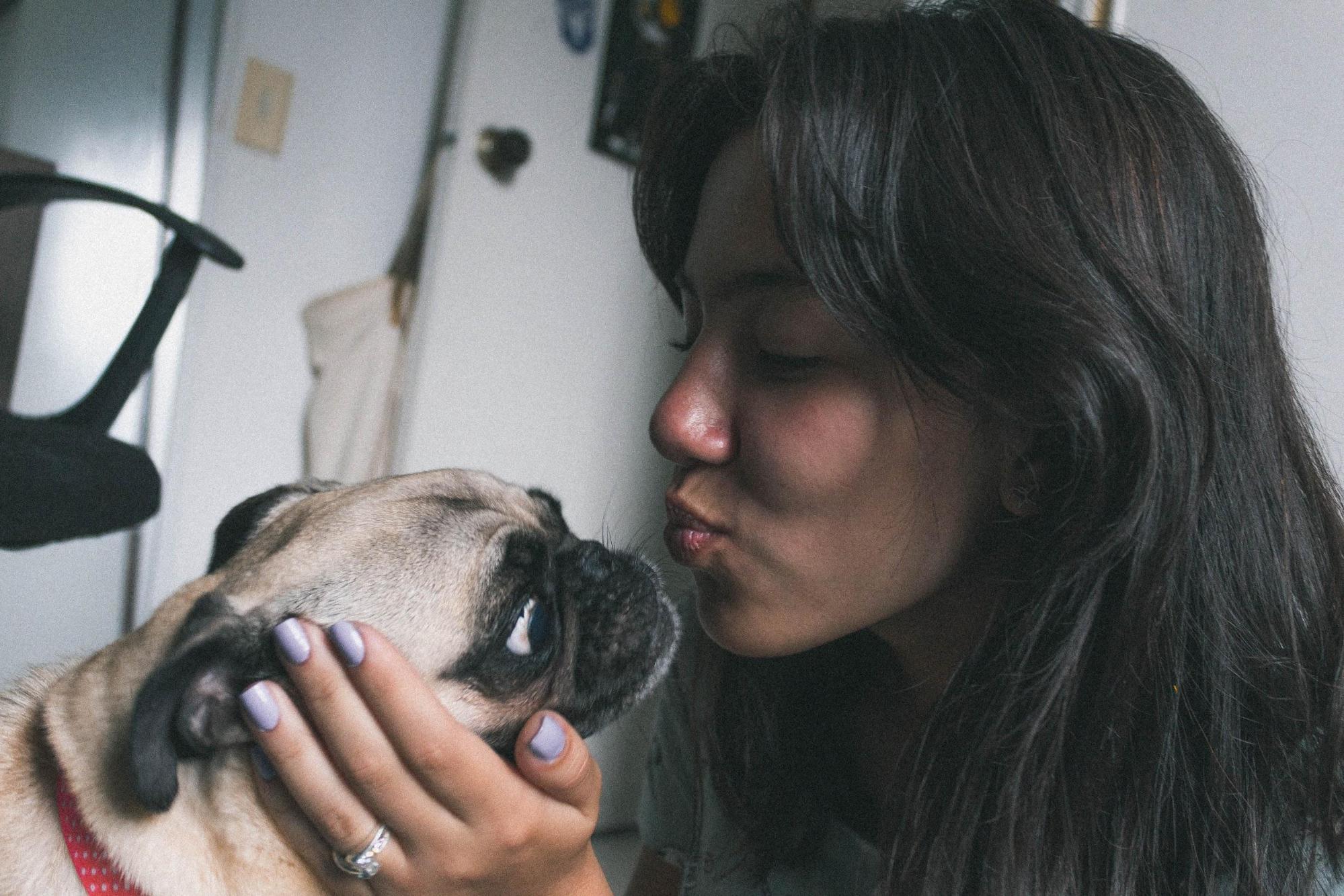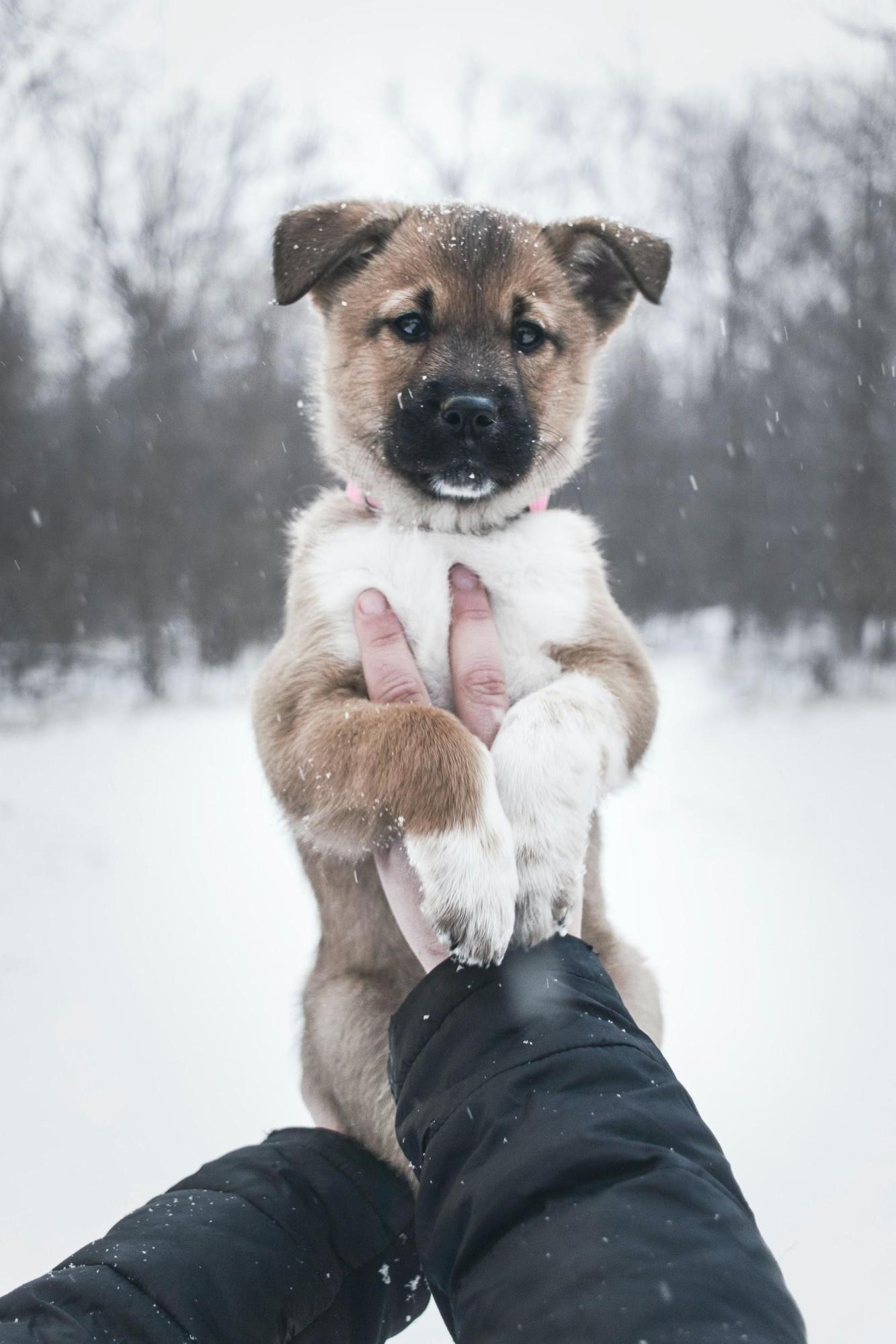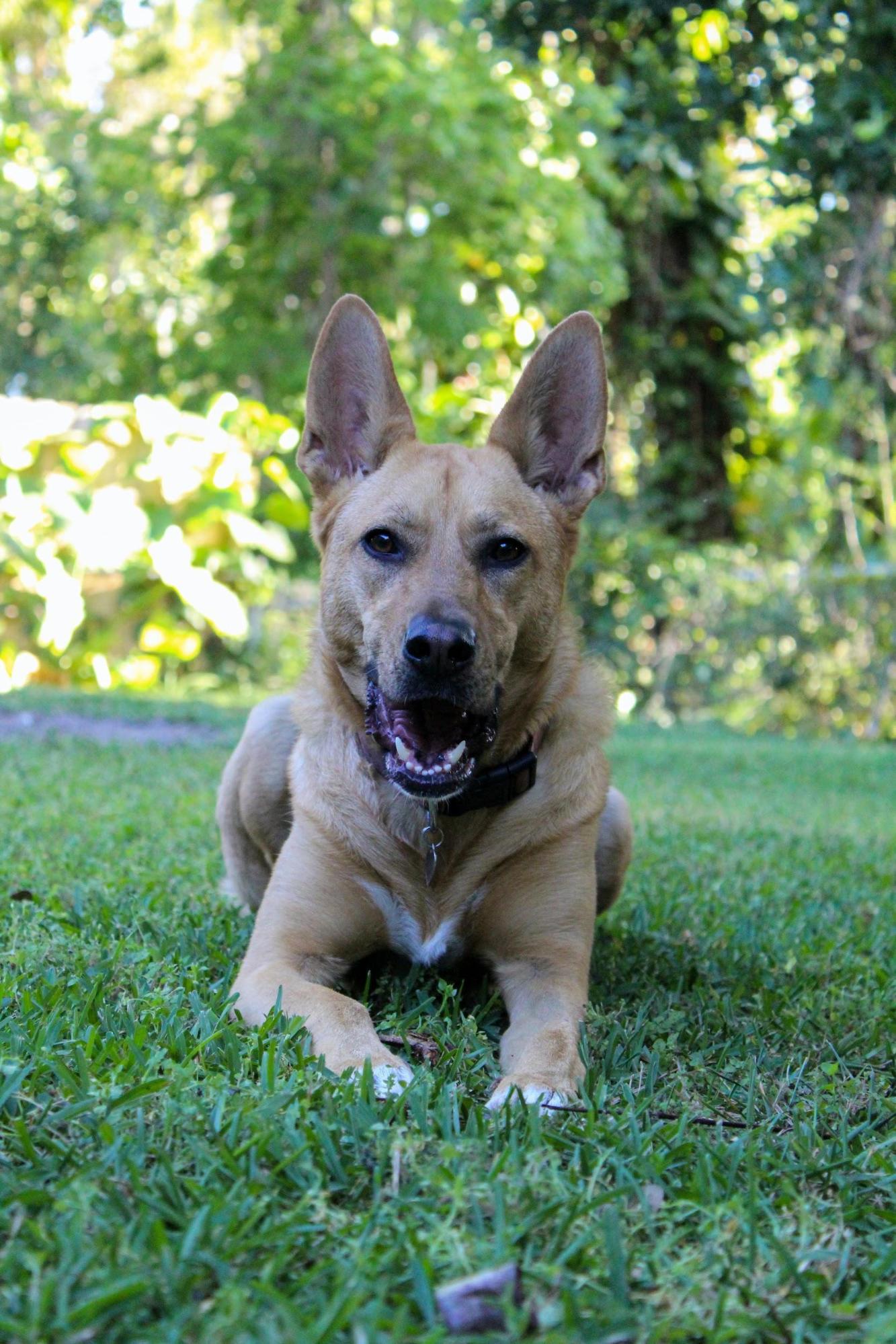
As part of your puppy's socialization process, you want to get them comfortable with being touched and having their body handled by yourself and other people. This includes not just social petting and touches but also during grooming, veterinary examinations, as well as care routines you can perform yourself like brushing their teeth, clipping nails, cleaning their ears, and even taking a scrub in the tub.
Some dogs become desensitized to human touches quickly, but others become uncomfortable and even aggressive when touched in sensitive areas. It's not much different than in humans, so hopefully, you can relate.
Of course, dogs can't communicate as we can, so while a person could just tell you about what's happening to their body, dogs are a bit more limited to barks, growls, and facial expressions. They also don't necessarily know what their needs are in every respect. We haven't heard of any dogs requesting manicures for their nails yet, but you never know.
When you are socializing your puppy, you want to get them comfortable with the entire range of touches and handling they can expect from humans. Depending on your dog's personality and past experiences, some touches will be met with more resistance than others. It's not uncommon for your dog to be hard-to-handle. Many rescues have experienced past traumas and have to work to overcome that with their new owners.
Vets recommend that you condition your dog to receive positive human touches as much as possible while they are still puppies as it sets them up for lower stress vet and grooming visits later in life. They may always experience some discomfort with touches in certain parts of their body, but you can lower their stress threshold and help them cope with the experience. For some examinations, dogs are restrained and even anesthetized; this adds another level to the stress and discomfort.
If your dog requires these additional precautions to ensure everyone's safety during a routine appointment, it will cost your vet and groomer extra time and cost you money.
Dogs will handle these stressors in different ways. Some may get aggressive or fearful, and others may shut down from the situation. Knowing how your dog generally reacts can help assist you in your training.
We'll give you some techniques you can use when working with your dog on the different parts of their body.

Desensitizing Your Pet
Get every member of your family involved with caring for your dog in on your desensitization training. It's for everyone's benefit ultimately, as your pup will get used to the touch of multiple people. If you have younger children, you may want to wait until your dog shows some positive progress before adding them into the mix.
You can turn into a fun game for both you and the dog, but it's best to start when they are still puppies. This process can be a lot harder when working with older dogs since they've already formed their associations about people and the world.
Hugs All-Around
What's great about desensitization training is that you and your family all get to hug your puppy! Relaxing and cuddling with a puppy is one of the best things on planet earth, and it teaches your dog to be a good receiver of human touch and affection. If your puppy gets anxious with any of the cuddling or touching, be sure to be extra gentle and go slowly. Your dog should be relaxed and feel like puppy jello in your arms. If your dog did not receive enough handling and touch from their mother before their weaning, you need to be extra on top of your handling regimen before growing into an adolescent dog.
This doesn’t mean you should always hold your puppy though! It’s best to have a healthy medium between alone time in the crate, play time outside, and some cuddle time in-between.
Face and Muzzle
The face and muzzle are sensitive, as are the eyes and ears. Go slow when addressing these areas. Never touch your dog in a way that would make you uncomfortable if you were to be touched that way. If you act gently towards your dog, they are likely to respond in kind.
Being rough with your dog around the collar and neck will cause them to act protectively and defend themselves. They may mouth at your hands and nip at you. Never strike your pet as a punishment or force them into a submissive position. It will only work to worsen the relationship.
Cutting Nails Safely
It may be a little while until your puppy's nails are long enough to cut, but it's not a bad idea to "practice" the clipping procedure by handling their paws and using the clippers to "mock" cut them.
Praise your dog and give them a few treats for remaining calm during the experience. It conditions them for when it's time to do it for real. Puppy's paws can be extra sensitive, so go slowly and pay attention to how they're feeling.
Ears And Mouth
You will need to examine and clean your dog's ears and mouth from time to time. Your vet will also have to touch these areas during visits, and those may already be high-anxiety events. If you're proactive with your desensitization work, your dog will be a superstar with the doggie doctor.
Here's what to do. When you handle these areas, give your dog extra praise and comfort them with loving touches between more probing touches. Be careful not to over-handle them and raise their stress levels back up. If there are other people involved in your dog's training, also bring them into the process. Your dog should become equally comfortable when multiple people handle them in these areas.
Picking Up Your Puppy

Some puppies don't like getting picked up. Especially without warning! How would you like some giant coming out of nowhere and scooping you up? Not a very nice thing to do. So with that in mind, please understand why not all dogs are thrilled when you decide to pick them up from behind. It's best to teach your dog a cue that will let them know they're about to get picked up and to start so they can see you coming. While you're picking up your puppy, give them lots of praise and let them know they're ok. Make sure they feel secure in your arms.
Sit down while holding your dog on your lap. You can hook one finger around the collar so your dog doesn't jump off. Start gently stroking them on the head and allow them to settle in a comfortable position. If they are getting squirmy, massage your pup behind the ears or on the chest. You can set your puppy on their back and give them a nice belly rub. Use the palm of your hand in a circular motion. While your dog is relaxed, you can pick them back up for a hug or kiss on the nose. These hugs are a form of gentle restraint that you are acclimating your dog to receiving touch without a fuss.
If your puppy is resisting and trying to get away from you, don't let go. It teaches them that acting out will get them what they want after a little struggle. Secure your dog's back against your chest and hold them so all their legs point away from you. Hold them low enough on your body that they can't turn their head to nip your face. Hold them like this until they calm down.
Once they're calm, praise them and release them after a few more seconds of holding still. Then repeat the process. Remember, we are doing this with young puppies, not adolescent or adult dogs!
If you attempt the above restraint exercises and find your dog is still hard to handle and resistant to you, this can be a serious issue. You should call a professional trainer immediately. You cannot safely care for a dog that you cannot hold or handle.
Home Grooming
You may decide to groom your dog at home by giving them a bath, brush, and a trim. You may not want to do the full job of a professional groomer, but in-between visits, it's a great way to keep their coats clean and looking neat. It may also end up saving you a few dollars. Like with nail clipping, you can familiarize your puppy with the tools you're going to use before you actually need to use them. It will help them recognize that what you're doing is normal and just something that happens to them from time to time. When you are brushing them, be gentle and don't pull their skin or fur. Please pay attention to how they're receiving your touch and offer them plenty of praise throughout.

Desensitizing The Automatic Defense Reflex
Puppies are incredibly sensitive to hands coming toward them from above their heads. They have a defense reflex that kicks to protect them from potential danger. Teaching your dog to see your hand and not feel fear is an essential step in touch desensitization training. You want them to begin to pair your hand approaching with positive events like affectionate pets or receiving treats.
Passing The Puppy
Some areas of our dogs often go overlooked in desensitization, such as the rear ends, ears, paws, teeth, and holding direct eye contact with them. Some areas increase in sensitivity over time because they simply don't get touched, then when they need an examination, your dog acts defensively! These "hot spots" shouldn't be ignored while in the puppy stage. You can turn this desensitization routine into a game by offering praise and treats for each area they allow you to handle gently without resisting.
After you've completed the routine, you can pick up your dog and pass them over to the next family member to do the same. Each person can try to handle each area for a little bit longer and more thoroughly. Increase the number of treats you offer for the extra sensitive areas like the rear end and privates.
Accepting Collar Grabs
A large percentage of dog bites occur when someone attempts to grab a dog by the collar or scruff of the neck. It's a highly sensitive area, especially when the dog is not familiar with the human in question. Many dogs have had negative experiences with humans that began in this way. However, taking our dogs gently by the collar is important for handling them and can be necessary to keep them safe. This practice builds on top of the positive association your dog is forming with human hands and touch in general.
You can train a positive association with collar grabs while your dog is enjoying a fun play session. Periodically interrupt their play by taking them by the collar and making them sit for you. Then offer them a treat and allow them to return to their play. Don't drag them or confine them in any way while working with technique. You don't want them to associate a collar grab with any other potentially negative events.
When puppies have negative experiences with collar touches, they can become hand-shy. If your dog is already exhibiting any signs of hand-shyness, don't continue to attempt collar grabs.
Take a step back in your desensitization training and only touch them where they allow you to. Then slowly work back up to collar grabs. Start at the tip of the tail, and with each progressive touch, reward them with a bit of kibble.
The key is always to work slowly and focus on how your dog is feeling. Do not force any touches that aren't comfortable. It will come back to "bite" you later in your dog's life.
Desensitization training is critical to being able to care for your dog. If you have any questions about the process and are wondering if your dog is on track, feel free to ask us your questions. Just write your message in the bubble below, and we'll respond back. You can also schedule a trainer evaluation with us at any time.
